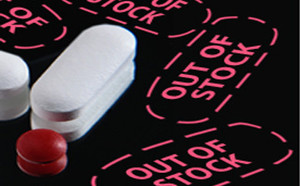The group of Associate Professor O Klungel of Utrecht University, The Netherlands, assessed the potential annual savings due to generic and therapeutic substitution of statin therapy for the general Dutch population, taking the patients’ medical histories into account. Pearl Gumbs and colleagues published the study in the British Journal of Clinical Pharmacology in November 2007.
The authors conducted a population-based costing study using the PHARMO Record Linkage System (RLS). PHARMO RLS contains drug-dispensing records from a representative sample of pharmacies located in more than 50 regions in The Netherlands. They selected all statin users in the database since 2003. The cost savings of generic substitution of statin therapy for all simvastatin and pravastatin users, and of therapeutic substitution of statin therapy for other statin users, were calculated. Substituting current users and new users of statins were considered separately. Therapeutic substitution was based on the medical history of the individual patient. Patients were only substituted if there was an appropriate substitute available. The appropriateness of substitution was based on drug–drug interactions between statins and possible co-medication and the availability of an equipotent alternative.
Gumbs et al. estimated that a total amount of approximately Euros 311 million was spent in the year 2005 on statin treatment for the general Dutch population. Of the current simvastatin and pravastatin users (total n = 45,757) 5% and 8%, respectively, were eligible for generic substitution, while of the other current statin users (n = 30,903 excluding ezitimibe) more than 87% were eligible for therapeutic substitution. The percentages of patients eligible for substitution for new statin users (total n = 42,202) were comparable. The observation that the percentage of patients eligible for therapeutic substitution was much higher than the percentage eligible for generic substitution was consistent with the relatively low potential savings following generic substitution.
The authors found that the total potential annual savings due to generic substitution were approximately Euros 2.4 million for current users and Euros1.8 million for starters. When therapeutic substitution was added the potential savings were Euros 71 million for current users and Euros 48 million for starters. When substitution was applied without consideration of a history of switching potential annual savings were Euros 87 million for current users and Euros 51 million for starters.
Study strength and limitations
According to Gumbs et al., the strength of this study is that it considered the patients' individual medication history to decide appropriateness of substitution and that it was population based. A possible limitation of this study is that they did not include added costs due to therapeutic substitution of current users, e.g. laboratory costs for additional cholesterol measurements. Yet, these costs are not ongoing and are relatively small compared with the costs of statins, and thus do not have a great impact on the economic benefits due to therapeutic substitution. Another possible limitation might be that the effectiveness of statin therapy might be affected by decreased adherence after switching or the inability to maintain lipid control after switching. A previous study has shown that generic substitution of antihypertensive drugs does not affect adherence or discontinuation rates in patients. They have no reason to believe this would be very different for other cardiovascular drugs such as statins or for therapeutic substitution. A New Zealand study has shown deterioration of lipid control following therapeutic substitution. However, the patients were switched to insufficient doses of a less potent drug. The authors believe their findings to be representative for the entire Dutch population. Their estimation of the Euros 311 million spent in the year 2005 only differs by 0.6% of the Euros 309 million as estimated by the Drug Information System of the Health Care Insurance Board. Two Dutch studies estimated annual savings of Euros 52 million and Euros 53 million for therapeutic substitution and a third study of Euros 100 million due to the generic substitution of simvastatin. However, these studies did not take the individual medication history into account. This study provides information regarding the extent to which (new) patients were already prescribed generic products, which explained the very low potential savings due to generic substitution of the remaining new branded simvastatin and pravastatin users. Furthermore, this study provides policy makers with information regarding the economic consequences of generic and therapeutic substitution for The Netherlands. The authors believe there is enough support for implementation of both generic and therapeutic substitution. They concluded that considerable savings can be obtained by therapeutic substitution of statins, but this is not the case for generic substitution since most patients already use generic statins when available.
References:
Gumbs PD, Verschuren WM, Souverein PC, et al. Society already achieves economic benefits from generic substitution but fails to do the same for therapeutic substitution. Br J Clin Pharmacol. 2007;64(5):680-5.
Source: British journal of clinical pharmacology








 0
0











Post your comment